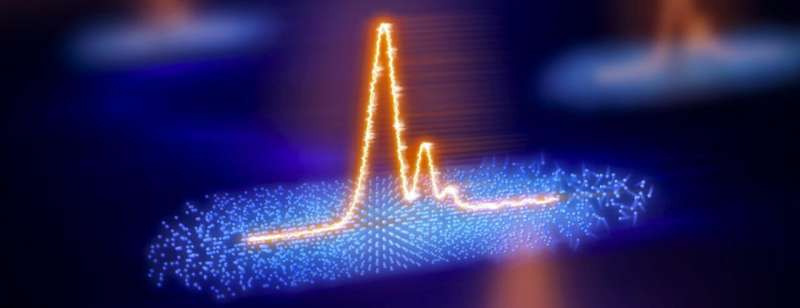This article has been reviewed according to Science X's editorial process and policies. Editors have highlighted the following attributes while ensuring the content's credibility:
fact-checked
peer-reviewed publication
trusted source
proofread
Exploring the ultrasmall and ultrafast through advances in attosecond science

A team of scientists at the Department of Energy's SLAC National Accelerator Laboratory are developing new methods to probe the universe's minute details at extraordinary speeds.
In previous research, the researchers developed a way to produce X-ray laser bursts which are several hundred attoseconds (or billionths of a billionth of a second) long. This method, called X-ray laser-enhanced attosecond pulse generation (XLEAP), allows scientists to investigate how electrons zipping around molecules jumpstart key processes in biology, chemistry, materials science and more.
Now, led by SLAC scientists Agostino Marinelli and James Cryan, the team has developed new tools to use these attosecond pulses in groundbreaking ways: the first use of attosecond pulses in pump-probe experiments and the production of the most powerful attosecond X-ray pulses ever reported. The experiments, conducted at SLAC's Linac Coherent Light Source (LCLS) X-ray free-electron laser and published in two articles in Nature Photonics, could revolutionize fields ranging from chemistry to materials science by offering insights into the fastest motions inside atoms and molecules.
A new method for measuring ultrafast phenomena
In the first development, researchers introduced a novel approach to conducting "pump-probe" experiments with attosecond X-ray pulses. These experiments, aimed at measuring ultrafast events shorter than a trillionth of a second, involve exciting atoms with a "pump" pulse followed by probing them with a second pulse to observe resultant changes.
This technique allowed scientists to track and measure electron movement within atoms and molecules—a critical process influencing chemical reactions, material properties, and biological functions. They accomplished this by generating pairs of laser pulses in two colors and meticulously controlling the delay between them to as little as 270 attoseconds.
"This capability unlocks new opportunities for studying the interaction of light with matter at the most fundamental level," Cryan said. "It's thrilling because it has evolved into a practical tool, enabling us to see electron dynamics that were once out of our reach. We're now observing processes that occur on timescales approaching the time it takes light to cross a molecule."
In a recent paper, researchers used this technique to observe electrons moving in real-time in liquid water. Future studies will apply this method to various molecular systems, refining these measurements' accuracy and expanding their application across scientific disciplines.
Creating high-power attosecond pulses
The second development concentrated on generating high-power attosecond pulses using a technique known as "super-radiance," achieving power levels of nearly one terawatt. This process involved a cascading effect in an X-ray free-electron laser, significantly amplifying the pulses' power.
The heightened intensity of these pulses allows scientists to explore unique states of matter and witness phenomena occurring at even shorter time scales.
"These are the most powerful attosecond X-ray pulses ever reported. The intensity of these pulses allows us to explore entirely new regimes of X-ray science," Marinelli said. "We've pushed the boundaries of the X-ray pulse energy, reaching power levels that open new experimental realms. This result was achieved thanks to a special type of wave that maintains its shape and speed as it propagates through the electron bunch, dramatically enhancing the intensity and energy of our pulses."
The researchers plan to further refine this technology to enhance the stability and control of these high-power pulses, aiming to widen their application across diverse scientific areas.
Propelling scientific exploration forward
These developments push the boundaries of our observational and measurement capabilities, setting the stage for future scientific breakthroughs that could transform our understanding of the natural world.
Observing atoms and electrons in motion facilitates the design of new materials with tailored properties for technology, energy, and other fields. Understanding electron movement during chemical reactions can also facilitate intelligent chemical design principles.
"These studies not only deepen our understanding of physics but also pave the way for future innovations that could transform our understanding electron driven processes," Cryan said. "Each attosecond pulse we generate offers a new glimpse at nature's building blocks, unveiling dynamics previously concealed from view. We anticipate many more exciting discoveries ahead."
More information: Zhaoheng Guo et al, Experimental demonstration of attosecond pump–probe spectroscopy with an X-ray free-electron laser, Nature Photonics (2024). DOI: 10.1038/s41566-024-01419-w
Paris Franz et al, Terawatt-scale attosecond X-ray pulses from a cascaded superradiant free-electron laser, Nature Photonics (2024). DOI: 10.1038/s41566-024-01427-w
Journal information: Nature Photonics
Provided by SLAC National Accelerator Laboratory





















